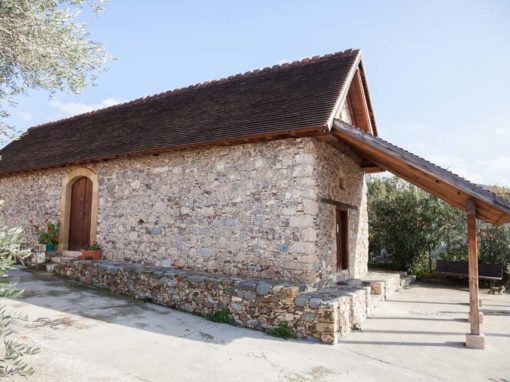Kykkos Monastery
Kykkos Monastery is one of the three largest and most historic Sacred Monasteries of Cyprus, belonging to the Church of Cyprus. In the Monastery there is the well-known icon of Panagia Eleousa (of Kykkos), which presents the Virgin Mary on the right, which according to tradition is allegedly hagiographed by Luke the Apostle.
The Holy, Vasiliki (Royal), Patriarchal Stavropigyan Monastery of Panagia Kykkou is located at the homonymous point of Mount Olympus in the western part of the Troodos mountain range near Throni tis Panagias (The Virgin Many’s Throne) at an altitude of 1300 m. It is called vasiliki because it was built with the financial help of the Emperor of Byzantium Alexios I of the Great Komninos (1081-1118), who sent the holy icon of the Virgin Mary, which was until then in the Byzantine palace in Constantinople and the Patriarchal Stavropigyia, when in 1818 with a congregation of the Ecumenical Patriarch Cyril VI was also recognised.
During the Ottoman domination it became a spiritual centre where it remains to this day. For its great contribution to the intellectual development of Cyprus, it has been honored by the Academy of Athens. In 1974, during the Turkish invasion of Cyprus and later, the monastery was used to house homeless people. The Archbishop of Cyprus Makarios III served as a probationary monk in the monastery.
It is dedicated to Our Lady and celebrates twice a year, at the Assumption of the Virgin on August 15th and at the Birth of the Virgin on the 8th September.
Today, the brotherhood has a significant number of monks, with the Abbot of the Most High Metropolitan of Kykkos and Tillyrias, Mr. Nikiforos. It is also the seat of the Bishopric of Kykkos.
Location
Monasteries - Chapels
Agias Marinas Chapel
The chapel of Agia Marina, which has no exact date of construction, is located a few metres above, to the east of the church of Panagia Chrisopantanassa. The chapel, built with stone of the area, is small, one-storied, arched and the roof covered with
Agios Andronikos & Agia Athanasia Chapel
The picturesque chapel of Agios Andronikos & Agia Athanasia owes its existence to the initiative of the teachers, the staff of the High School and Lyceum of Solea, the Ephorate and the Parents’ Association. Following demarches to the Ministry of Ed
Agios Georgios (St. George) Chapel
On the road connecting Galata with Kakopetria, stands the chapel of Agios Georgios. Contrary to other chapels, it sits towards the north to the south. Testimonies say that the main reason for this direction was because it was built in winter when the s
Agios Nikolaos (St. Nicholas) Chapel
This is the first Byzantine church one will encounter entering Galata village, on the east side of the road. The chapel of Saint Nicholas dates back to the 15th century. It is also the same period as the rest of the churchs in the area. It is a one-ais
Agios Tychikos Chapel
The Apostle Tychikos was among the Saints who worked towards establishing the Church of Jesus Christ on the island. He was one of the 70 Apostles of the Lord. Despite the fact that his name has been closely tied to Cyprus, since he was the first Bisho
Chapel of Agios Andronikos & Agia Athanasia (Flassou)
One kilometer west of Flassou is the chapel of St Andronikos and Athanasia. The chapel was built around the beginning of the 19th century and is located on a plot outside the village. Architecturally, it is a simple, rectangular type, with a tiled roof
Chapel of Agios Georgios Epitidiotis
West of the village of Flassou is the chapel of St. George o Epitidiotis, drowned in greenery. It was named after the stems of pine trees. It was built according to tradition around the 18th century and belongs to the architectural type of the one-aisl
Chapel of Agios Georgios Lamproforos
The chapel of Saint George Lamproforos was the first church of the community. Now, it is under the protection of the Department of Antiquities. It was built in the 17th century and it is situated eastern of the village, next to the cemetery. Its archit



















